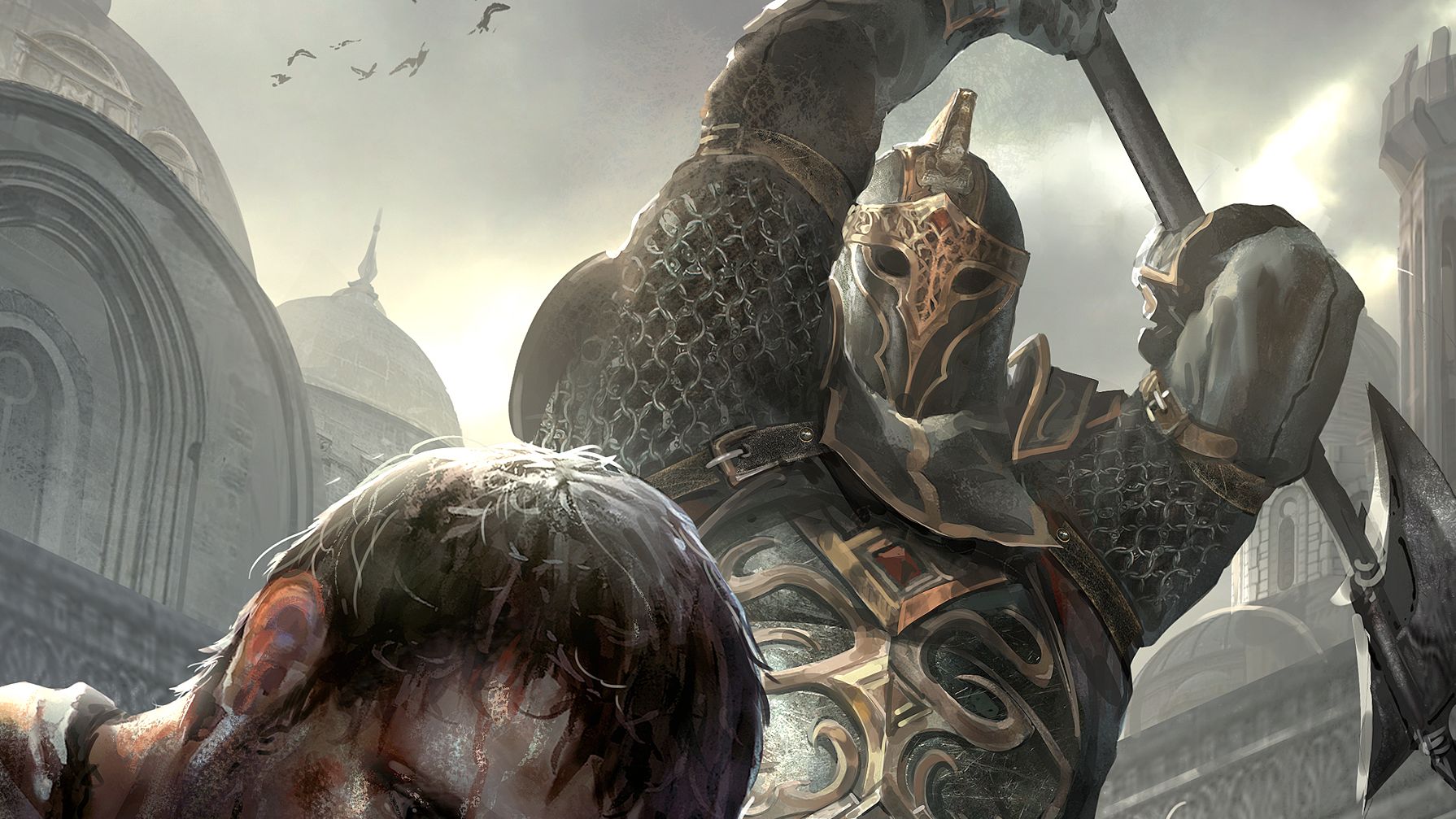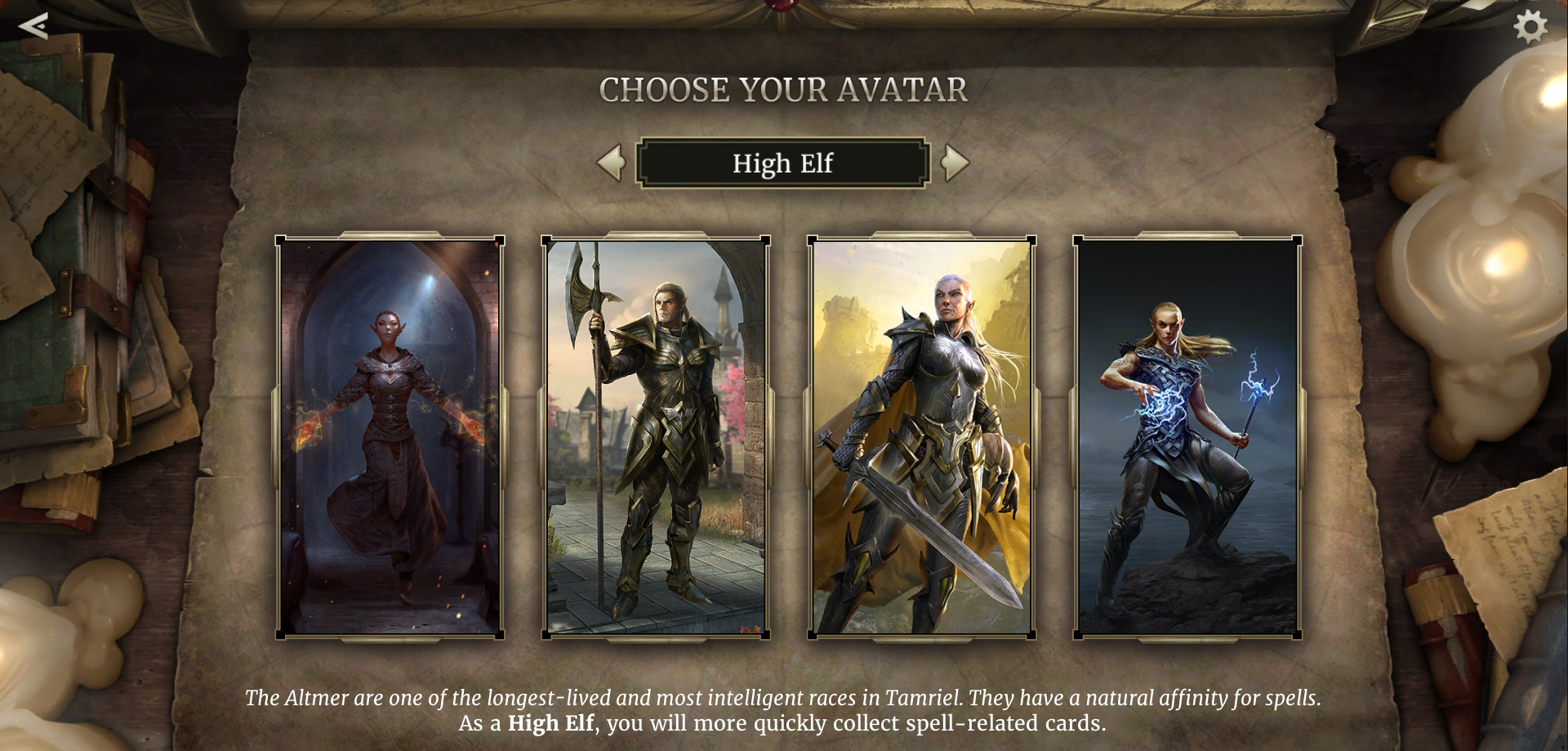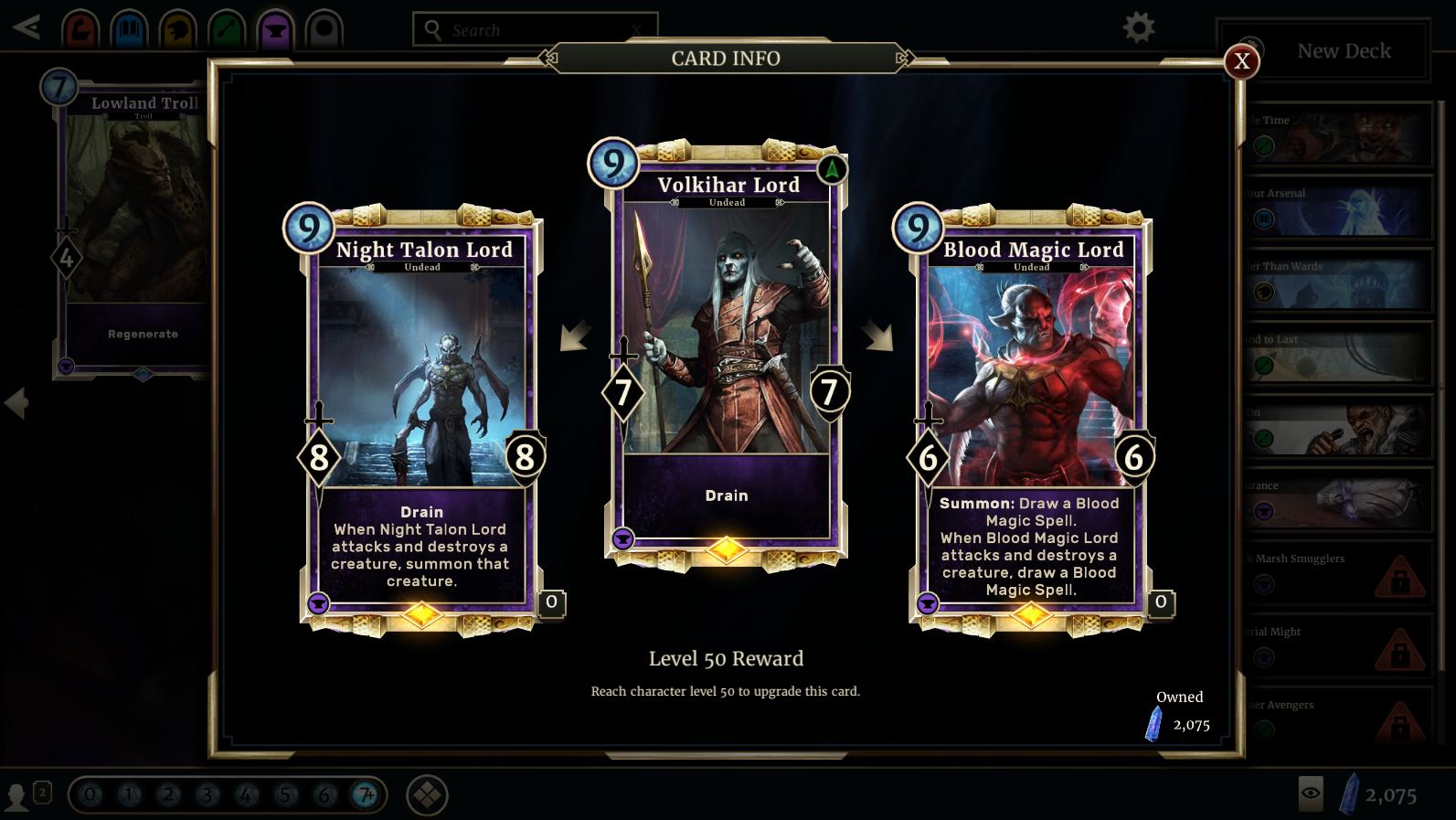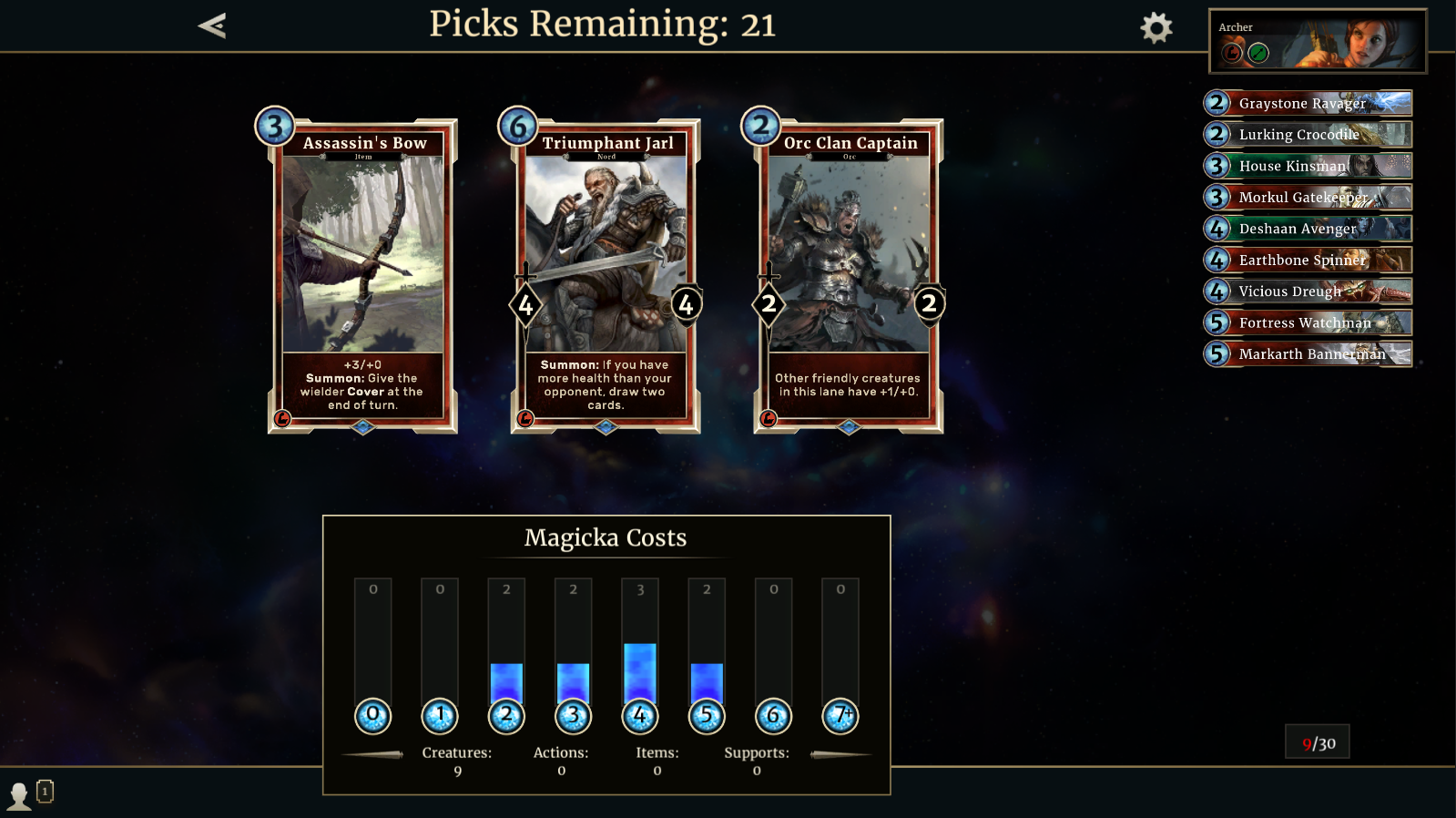Get off to a strong start in The Elder Scrolls: Legends
How to build a good collection, quickly.

Elder Scrolls fans were understandably disappointed when Bethesda first announced that the next installment in the franchise would be a free-to-play card game. Despite the success of games like Hearthstone, the phrase “free-to-play card game spin-off” still sounds like “hackneyed cash-in” to many gamers, and not without reason.
Even so, after a string of delays and closed beta invites, The Elder Scrolls: Legends has now entered open beta. Which is good news, not just because it means more people get to try what is essentially a marriage of Hearthstone and Magic: The Gathering couched in the rich lore of The Elder Scrolls, but also because I won’t have to wait eight minutes to queue into an arena game anymore.
It also means lots of players are going to have to come to terms with Legends’ sometimes esoteric mechanics, which, as our own Tim Clark said in his preview of the game, isn’t always easy. With that said, here are a few tips for getting off to a good start in Legends.
Play the story
You don’t play card games to play by yourself, but Legends’ story mode should be every new player’s priority. As you progress through the game’s three act campaign you’ll unlock new cards and even entire 50-card decks, so the story is the fastest way to build a serviceable collection. You’ll also get a crash course on mechanics like Lanes and Prophecy, which you can learn more about in Tim’s take on the game and on the helpful Legends forum.

Change your race
On top of your portrait and emotes, your avatar and race also determine what type of bonus cards you’ll earn when ranking up. When you level up as a Khajiit, for example, you’ll regularly receive Agility and Willpower cards based on the Pilfer mechanic. I quickly built up a sizeable selection of Khajiit cards, including many epics and legendaries, just by repping those whiskers. You can change your race whenever you want, so if you suddenly decide you want to build a Dark Elf control deck or Nord aggro deck or what-have-you, swap your avatar to ensure your bonus cards are relevant.
Craft carefully
In addition to bonus cards, you can tailor your collection through the rookie mechanic. Some cards start out in a weaker form but are automatically upgraded when you reach a certain level, and you can often choose between two available upgrades. You can pull or craft either upgraded version yourself, but it’s often better to pocket the dust and just level up. And if there is a card you want to craft, check to make sure you aren’t close to upgrading its rookie counterpart, lest you waste your soul gems.

Learn your colors
Legends’ five attributes closely resemble the color wheel in Magic, but there are key differences. For clarity’s sake, here’s a quick-and-dirty overview:
The biggest gaming news, reviews and hardware deals
Keep up to date with the most important stories and the best deals, as picked by the PC Gamer team.
- Strength: Face is the place. Lots of Charge minions and items to buff them. Also one-damage ping effects, because fire.
- Intelligence: The most spell-heavy attribute, and the one with the best AoE. Lots of spell and Ward (Divine Shield) synergy, and several screwy combos.
- Willpower: The token attribute that loves to flood the board. Plenty of life gain, minion removal and buffs. Surprisingly controlling.
- Agility: The most minion-based attribute, full of combat tricks like Pilfer, Move and Lethal (Deathtouch). Very few spells; instead, many minions have utility Summon (Battlecry) effects.
- Endurance: A slower, defensive attribute that loves to ramp. Big late-game threats, lots of Last Gasp (Deathrattle) effects, and cards that benefit from other minions dying.
Play arena
Story mode is the best way to learn Legends’ mechanics, but arena is the best place to test out new cards and attributes. You can draft anything in the game, so it’s an especially great way to learn the cards you want to craft for your constructed decks. You can also earn plenty of gold and card packs if you perform well. In just over two weeks, I’ve made well over 5,000 gold just from playing versus arena, so I’ve built a decent collection without spending a dime. There’s also a solo arena where you face off against NPC bosses. After each solo victory, you draft another card, so new players will find it particularly informative.

Draft BREAD
Arena is at its best when you win enough to recoup your entry fee, and to that end you’ll want to follow the old Magic mnemonic, BREAD. For the unfamiliar, just know that it’s a hierarchy of what kind of cards you should draft: Bombs, very powerful cards that can win you the game outright; Removal, answers to your opponent’s threats; Evasion, cards with unique combat interactions; Aggro, cards that can finish the opponent; and Duds, cards you pick because there’s nothing better. I’d also add that Prophecy cards are highly valuable in arena since drafted decks are only 30 cards, giving you higher odds of drawing a Prophecy card off Rune Loss. (If that was gibberish to you, try this forum post.)
Stick to 50
Decks in Legends can be 50 to 70 cards, but it’s usually better to limit yourself to 50. Some control or combo decks legitimately benefit from big lists, but more often than not the consistency of a smaller deck is the way to go. For constructed play I’d also recommend a basic toolkit of six pieces of removal, three cards that gain you life, six cards that draw you additional cards, and at least three late-game threats. That, and a mana curve that looks like a bell or parabola — a little early game, a lot of mid game, and a little late game.

Austin freelanced for PC Gamer, Eurogamer, IGN, Sports Illustrated, and more while finishing his journalism degree, and has been a full-time writer at PC Gamer's sister publication GamesRadar+ since 2019. They've yet to realize that his position as a staff writer is just a cover-up for his career-spanning Destiny column, and he's kept the ruse going with a focus on news, the occasional feature, and as much Genshin Impact as he can get away with.

